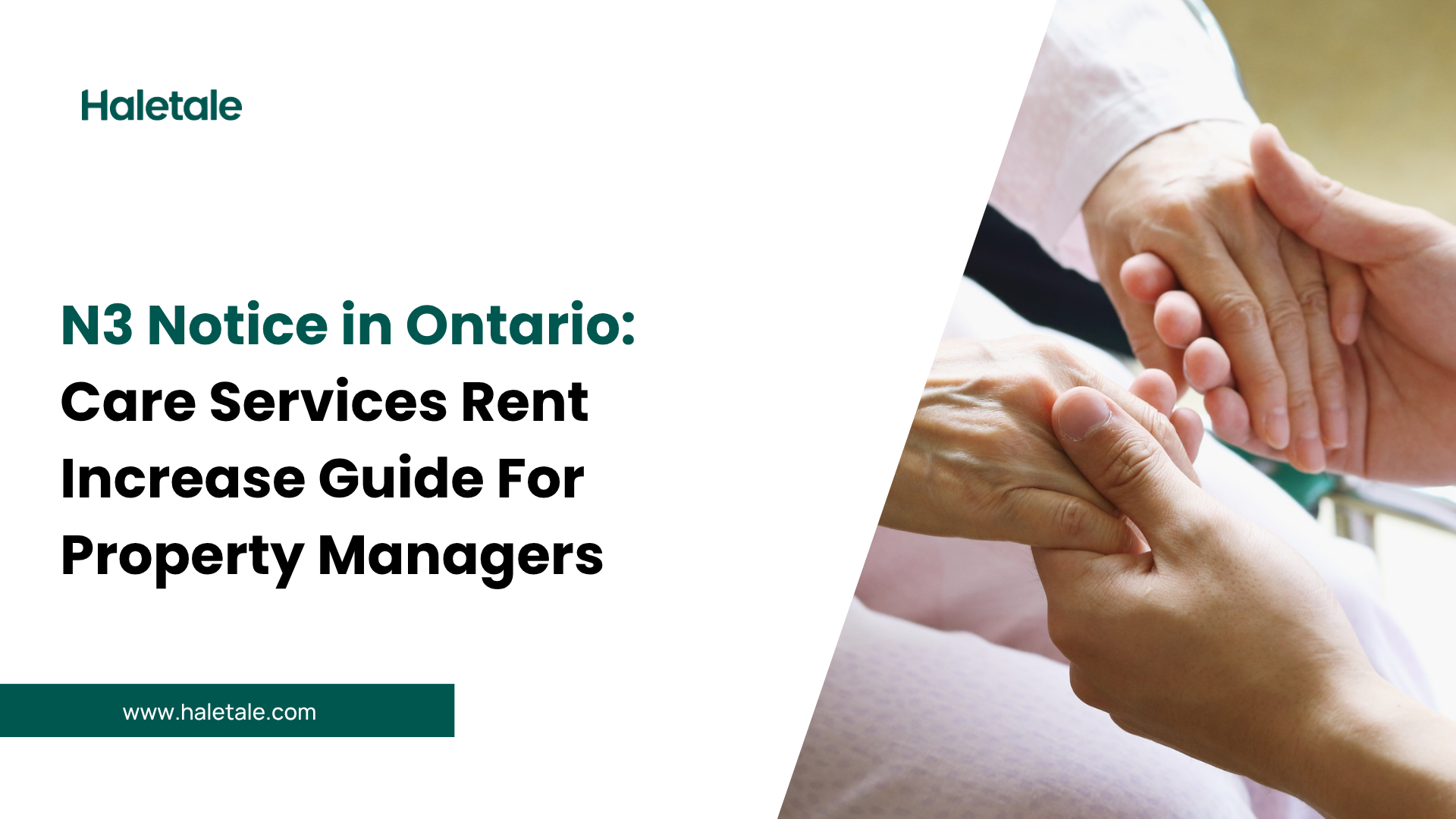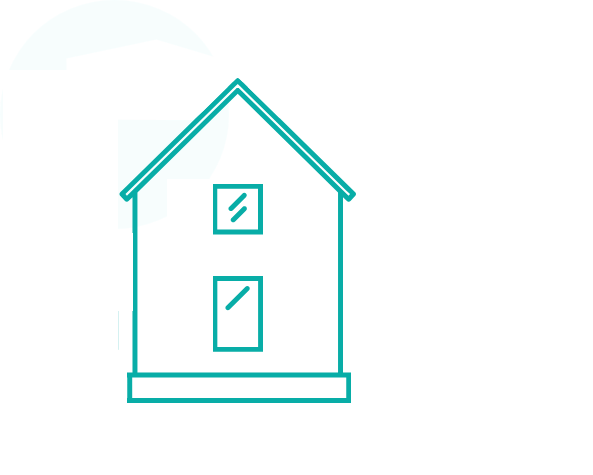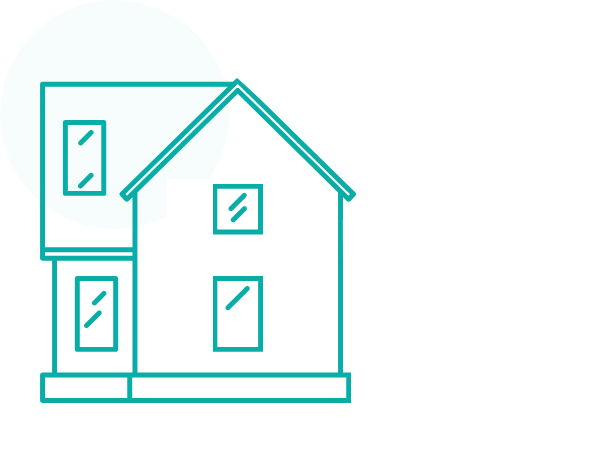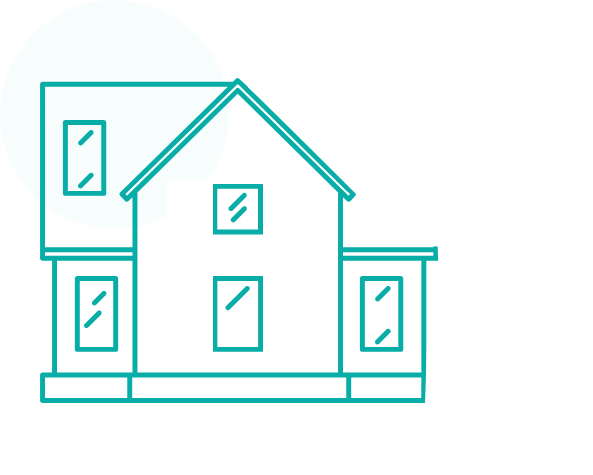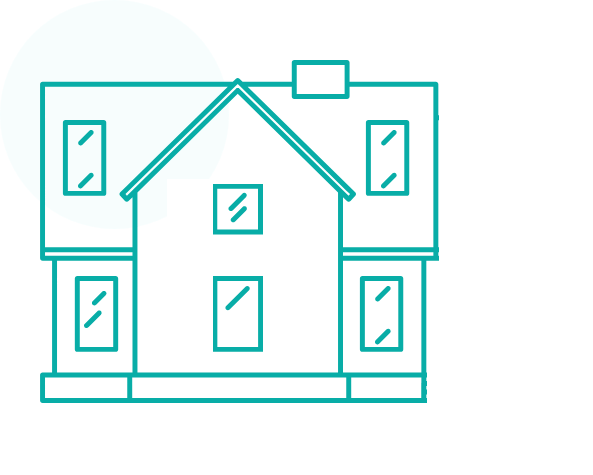N3 Notice Ontario: Complete Guide to Increasing Rent for Care Services and Meals in 2025
The N3 notice serves a unique niche in Ontario’s rental landscape, specifically designed for properties that bundle accommodation with care services and meals—a sector managing over 100,000 units across the province. If you operate retirement homes, care facilities, or residential properties with included services, understanding the N3 Notice to Increase the Rent and/or Charges for Care Services and Meals could significantly impact your facility’s financial sustainability while maintaining compliance with complex regulations.
2025 Care Services Update
New provincial guidelines now differentiate between essential and optional care services, affecting how N3 increases are calculated. The base rent component remains capped at 2.5%, while care service increases follow market rates with proper justification.
Quick N3 Reference Guide
| N3 Component | Increase Limit | Documentation Required |
| Base Rent | 2.5% (2025 guideline) | Standard calculation |
| Meals | Market rate | Cost justification |
| Care Services | Market rate | Service breakdown |
| Medical Services | Actual cost | Professional rates |
| Notice Period | 90 days | All components |
| Opt-out Option | Must be offered | For non-essential services |
Understanding the N3 Notice
The Unique Nature of N3
The N3 notice addresses the complex reality of properties that provide more than just accommodation. Unlike standard residential tenancies covered by N1 notices, or exempt units using N2, the N3 recognizes that care facilities have dual cost structures: housing and services.
This distinction matters because while housing costs face rent control restrictions, service costs can fluctuate with market conditions, staffing expenses, and care requirements. The N3 provides a legal framework for adjusting both components while protecting vulnerable residents.
Why N3 Complexity Requires Precision
Care facility operators face unique challenges:
- Aging infrastructure requiring constant updates
- Rising healthcare costs outpacing general inflation
- Staffing shortages driving wage increases
- Regulatory compliance costs increasing annually
- Food inflation affecting meal programs
Without proper N3 implementation, facilities lose thousands monthly, potentially compromising care quality or facility viability. According to Haletale’s property management ROI calculator, improper increase management costs care facilities an average of $4,200 per unit annually.
Legal Framework
The N3 operates under both the Residential Tenancies Act and additional regulations governing care facilities:
- Retirement Homes Act provisions
- Long-Term Care Homes Act requirements
- Municipal licensing standards
- Health and safety regulations
Who Needs to Use the N3 Notice
Qualifying Properties
Retirement Homes
Properties offering:
- Independent living with services
- Assisted living arrangements
- Memory care units
- Graduated care facilities
These facilities typically bundle accommodation with varying service levels, making N3 essential for financial sustainability.
Care Facilities
Including:
- Residential care homes
- Group homes with support services
- Supportive housing programs
- Transitional living facilities
Specialized Housing
Properties providing:
- Student residences with meal plans
- Rooming houses with included services
- Religious community housing with meals
- Corporate housing with services
Determining N3 vs Other Notices
Use N3 When:
- Rent includes mandatory meals
- Care services are bundled with accommodation
- Medical or support services are provided
- Any combination of housing plus services
Use N1 Instead When:
- Standard residential tenancy
- No included services
- Utilities only inclusion
Use N2 When:
- Exempt unit (post-2018) without services
- Market rate units without care components
For properties managing mixed portfolios, Haletale’s property management software helps track which units require which notice types, preventing costly errors.
Breaking Down Care Services vs Base Rent
The Critical Distinction
Understanding the component breakdown is essential for legal compliance and maximizing allowable increases:
Base Rent Component
What’s Included:
- Accommodation costs
- Basic utilities (heat, water, electricity)
- Property taxes portion
- Standard maintenance
- Common area access
Increase Limit: 2.5% for 2025 (provincial guideline)
Care Services Component
What’s Included:
- Personal support workers
- Medication administration
- Assistance with daily living
- Recreational programs
- Transportation services
- Housekeeping beyond basic
Increase Limit: Market rate with justification
Meals Component
What’s Included:
- Daily meal provisions
- Special dietary accommodations
- Snack programs
- Holiday meals
- Nutritional supplements
Increase Limit: Actual cost increases with documentation
Calculating Component Percentages
Example Breakdown:
Total Monthly Charge: $3,500
– Base Rent: $2,000 (57%)
– Care Services: $900 (26%)
– Meals: $600 (17%)
Allowable Increases:
– Base Rent: $2,000 × 2.5% = $50
– Care Services: Market adjustment = $75
– Meals: Food inflation = $48
Total Increase: $173 (4.9%)
QuickBooks integration helps track component costs accurately for justified increases.
The 90-Day Notice Requirement
Timeline Management for Multiple Components
The N3’s 90-day requirement applies to all components, but the complexity of explaining multiple increases requires strategic timing.
Optimal Service Schedule
Day -30: Pre-Notice Preparation
- Analyze cost increases
- Prepare justification documents
- Review resident agreements
- Plan communication strategy
Day 0: N3 Service
- Deliver comprehensive notice
- Include all components
- Provide opt-out options
- Attach supporting documents
Day 1-30: Initial Response Period
- Field resident questions
- Hold information sessions
- Address concerns
- Document feedback
Day 31-60: Adjustment Period
- Process opt-out requests
- Negotiate payment plans
- Update care plans
- Modify service levels
Day 61-89: Final Preparation
- Confirm new amounts
- Update billing systems
- Final communications
- Staff training
Day 90: Implementation
- New rates effective
- Monitor compliance
- Track opt-outs
- Document changes
Step-by-Step N3 Process
Phase 1: Cost Analysis and Justification
Step 1: Analyze Component Costs
Base Rent Analysis:
- Property tax increases
- Insurance premium changes
- Utility rate adjustments
- Maintenance cost trends
Care Services Review:
- Staff wage increases
- Training costs
- Equipment expenses
- Regulatory compliance costs
Meal Program Evaluation:
- Food cost inflation
- Special diet expenses
- Kitchen equipment needs
- Nutritionist fees
Using Haletale’s financial reporting features, facilities can track detailed cost breakdowns for accurate justification.
Step 2: Determine Increase Amounts
Calculation Framework:
- Identify actual cost increases
- Apply guideline to base rent
- Calculate market rates for services
- Document food cost changes
- Total allowable increase
Step 3: Prepare Justification Package
Required Documentation:
- Cost comparison spreadsheets
- Vendor price increase notices
- Wage adjustment records
- Food invoice comparisons
- Service enhancement descriptions
Phase 2: Notice Preparation
Step 4: Complete N3 Form
Section-by-Section Guide:
Part A – Tenant Information:
- All resident names
- Unit/room numbers
- Current total charges
- Component breakdown
Part B – New Charges:
- Base rent increase (≤2.5%)
- Care services adjustment
- Meal charge changes
- Total new amount
- Percentage increases
Part C – Service Options:
- List optional services
- Opt-out procedures
- Deadline for decisions
- Impact of opting out
Step 5: Prepare Resident Communications
Information Package Should Include:
- Detailed explanation letter
- Cost justification summary
- Service comparison chart
- FAQ document
- Meeting schedule
Phase 3: Service and Implementation
Step 6: Execute Service
Best Practices for Care Facilities:
- Hand deliver to each resident
- Offer reading assistance
- Provide large print versions
- Ensure comprehension
- Document delivery
Step 7: Manage Responses
Common Response Scenarios:
Acceptance:
- Document agreement
- Update records
- Confirm understanding
Questions/Concerns:
- Schedule individual meetings
- Provide additional information
- Consider adjustments
Opt-Out Requests:
- Process service reductions
- Calculate new amounts
- Document changes
- Adjust care plans
Tenant communication features help manage complex resident interactions during N3 implementation.
Calculating Allowable Increases
Market Rate Determination for Services
Research Methodology
Comparable Facility Analysis:
- Survey similar facilities within 10km
- Compare service levels
- Adjust for quality differences
- Calculate average rates
- Position appropriately
Cost-Plus Approach:
Direct Costs (wages, supplies)
+ Indirect Costs (administration, training)
+ Reasonable Margin (10-15%)
= Service Charge
Documentation Requirements
Essential Records:
- Competitive analysis reports
- Cost breakdown sheets
- Historical increase patterns
- Industry benchmarks
- Professional assessments
Food Cost Justification
Tracking Requirements:
- Monthly food invoices
- Menu cost analysis
- Special diet expenses
- Waste reduction efforts
- Bulk purchasing savings
Acceptable Increase Factors:
- Documented food inflation
- Enhanced nutrition programs
- Special dietary requirements
- Local sourcing premiums
- Sustainability initiatives
Common N3 Mistakes and Solutions
Critical Errors
Mistake 1: Treating Everything as Base Rent
The Problem: Applying 2.5% cap to all charges
The Cost: Thousands in lost revenue
The Solution: Properly separate components
Mistake 2: Inadequate Justification
The Problem: No documentation for service increases
The Cost: Resident challenges, rollbacks
The Solution: Comprehensive cost tracking
Mistake 3: Missing Opt-Out Provisions
The Problem: Forcing non-essential services
The Cost: Legal challenges, complaints
The Solution: Clear optional service choices
Mistake 4: Poor Communication
The Problem: Confusing notice without explanation
The Cost: Resident anxiety, complaints
The Solution: Comprehensive information packages
Mistake 5: Calculation Errors
The Problem: Math mistakes in complex calculations
The Cost: Over/undercharging, credibility loss
The Solution: Automated calculation tools
Special Considerations for Care Facilities
Vulnerable Resident Protections
Care facilities must balance revenue needs with resident vulnerability:
Additional Requirements:
- Plain language explanations
- Family notification (where authorized)
- Advocacy group involvement
- Extended response periods
- Hardship considerations
Regulatory Compliance
Beyond RTA requirements, consider:
- RHRA inspections and standards
- Municipal licensing requirements
- Health unit regulations
- Fire safety upgrades
- Accessibility standards
Managing Mixed Payment Sources
Complex Funding Scenarios:
- Government subsidized residents
- Private pay residents
- Insurance coverage
- Split payment arrangements
Each requires different approaches to N3 implementation.
Digital Management for N3 Notices
Automation for Complex Calculations
Managing N3 notices requires sophisticated tools for multi-component tracking. Haletale’s property management platform offers specialized features for care facilities.
Component Tracking Systems
Automated Monitoring:
- Separate cost centers for each component
- Real-time expense tracking
- Automatic percentage calculations
- Guideline compliance checking
- Market rate comparisons
Justification Documentation
Digital Archive Features:
- Invoice scanning and storage
- Vendor contract management
- Cost trend analysis
- Comparison report generation
- Audit trail maintenance
Integration Benefits
Connected Systems:
- QuickBooks integration for detailed cost tracking
- Meal planning software connectivity
- Care management system integration
- Government reporting automation
N3 FAQs
Component Questions
Q: Can I increase care services by more than 10%?
Yes, if justified by actual cost increases and market rates. There’s no cap on care services, only on the base rent component.
Q: What if residents want different service levels?
N3 allows for tiered service options. Residents can opt out of non-essential services or choose enhanced packages.
Q: How do I handle dietary restrictions costing more?
Special dietary needs can justify higher meal charges for affected residents, documented by nutritionist recommendations.
Process Questions
Q: Can I serve N3 and N1 notices together?
No, use N3 for units with services. It encompasses base rent increases, eliminating the need for N1.
Q: What about mid-year service additions?
New services added mid-tenancy require resident agreement and may trigger N3 notice requirements for charge adjustments.
Q: Do temporary services count?
Temporary services (like recovery care) typically require separate agreements rather than N3 notices.
Compliance Questions
Q: What if the province changes guidelines mid-year?
Use the guideline in effect when serving the notice. Mid-year changes don’t affect properly served notices.
Q: Can residents challenge service quality?
Quality concerns are separate from N3 increases. Address through care standards processes while maintaining legal increases.
Q: What about court-ordered residents?
Check for any tenant history using Openroom.ca to understand past disputes or payment issues that might affect increase implementation.
Optimize Your Care Facility Revenue
Don’t Leave Revenue on the Table
Care facilities operating without proper N3 implementation lose:
- Component Confusion: $2,000-5,000 per unit annually
- Justification Failures: 20-30% of intended increases
- Calculation Errors: 5-10% revenue leakage
- Poor Documentation: Legal challenge risks
Transform Your Facility Management
See how successful care facilities optimize revenue while maintaining compliance:
Platform Features:
- Multi-component tracking
- Automated calculations
- Justification documentation
- Resident communication tools
- Regulatory compliance checks
Start Your Digital Transformation
Join care facility operators maximizing returns with integrated management:
Trial Includes:
- Complete N3 automation
- Component cost tracking
- Market rate analysis
- Communication templates
- Expert support
Balancing Care and Commerce
The N3 notice represents the intersection of care provision and business sustainability. Unlike standard residential increases, N3 requires balancing resident needs, regulatory requirements, and financial realities across multiple service components.
Success with N3 notices demands meticulous record-keeping, clear communication, and sophisticated calculation methods. The complexity of separating base rent from services while justifying market-rate increases makes manual management risky and time-consuming.
By leveraging professional property management tools designed for care facilities, operators can ensure compliance while maximizing allowable increases. The key lies in understanding component distinctions, maintaining comprehensive documentation, and communicating effectively with vulnerable resident populations.
Every improperly calculated N3 notice represents lost revenue that compounds over time. In an industry where margins are tight and care quality depends on financial sustainability, mastering the N3 process isn’t optional—it’s essential.
Last Updated: September 17, 2025 | Information current as of publication date. Consult legal counsel for complex care facility situations.

